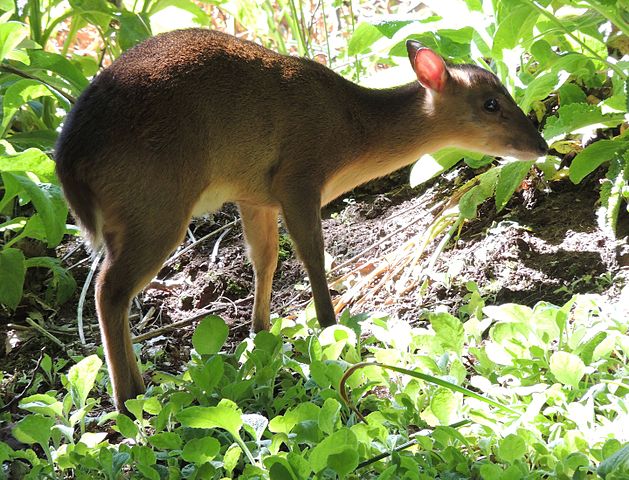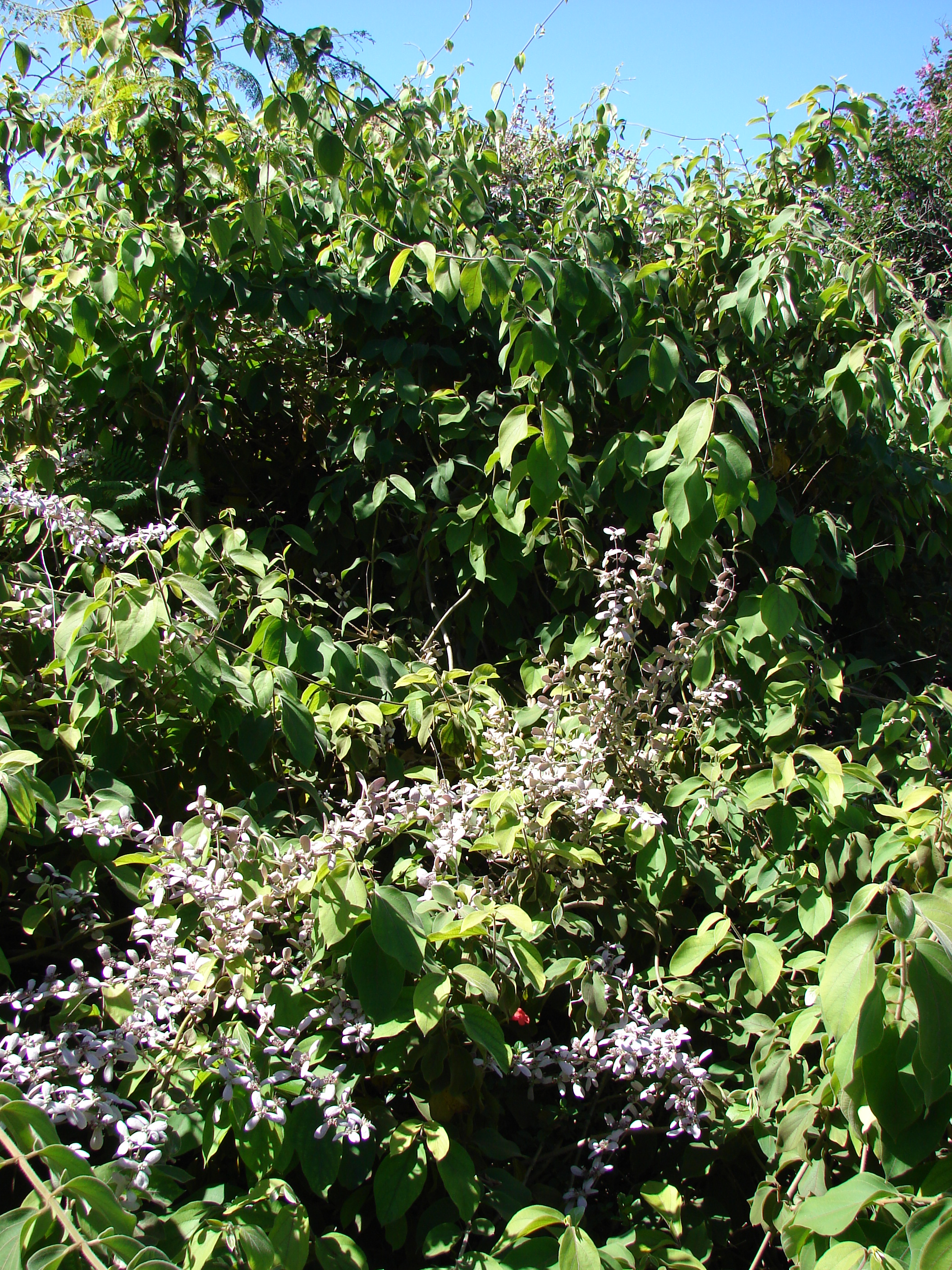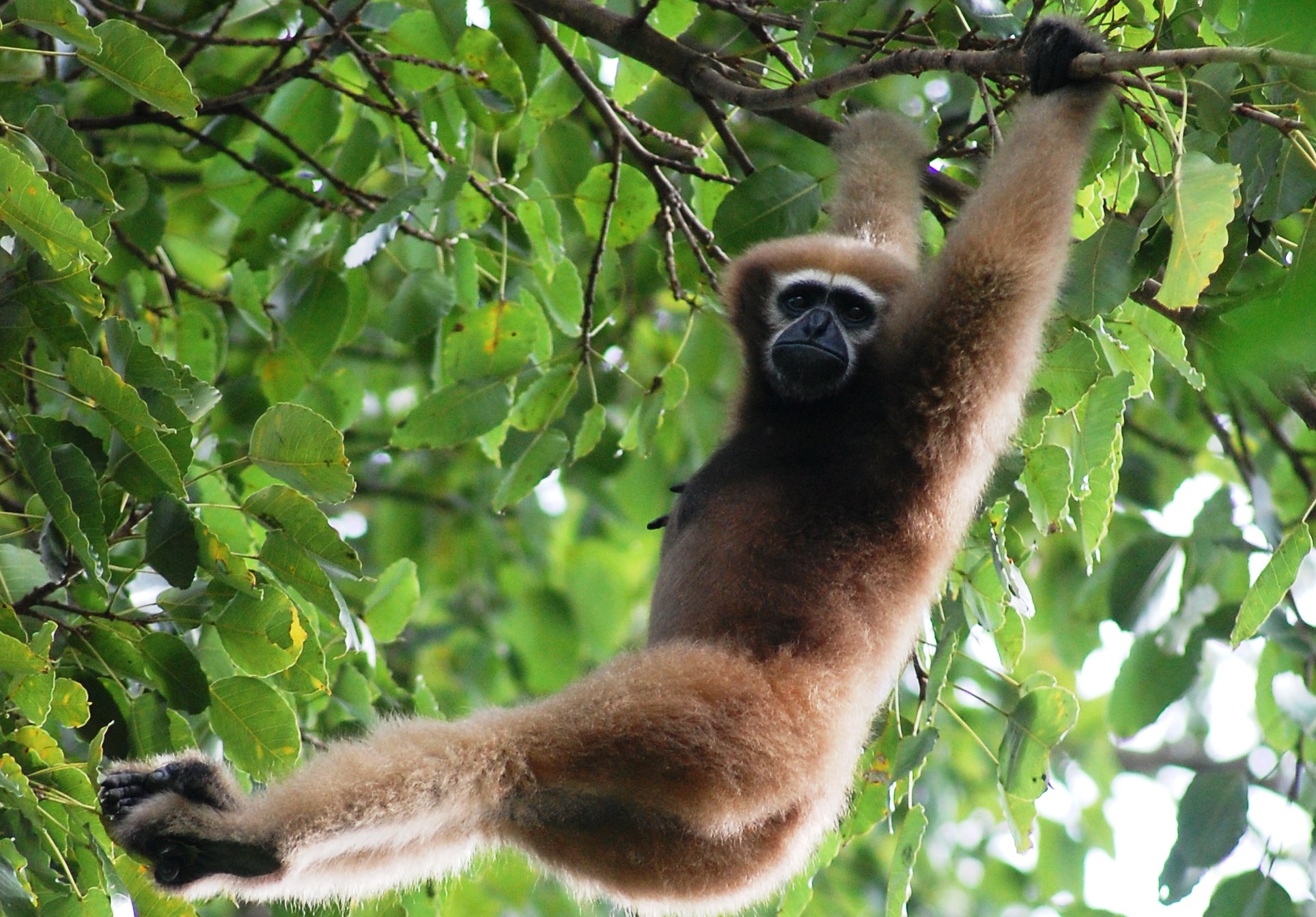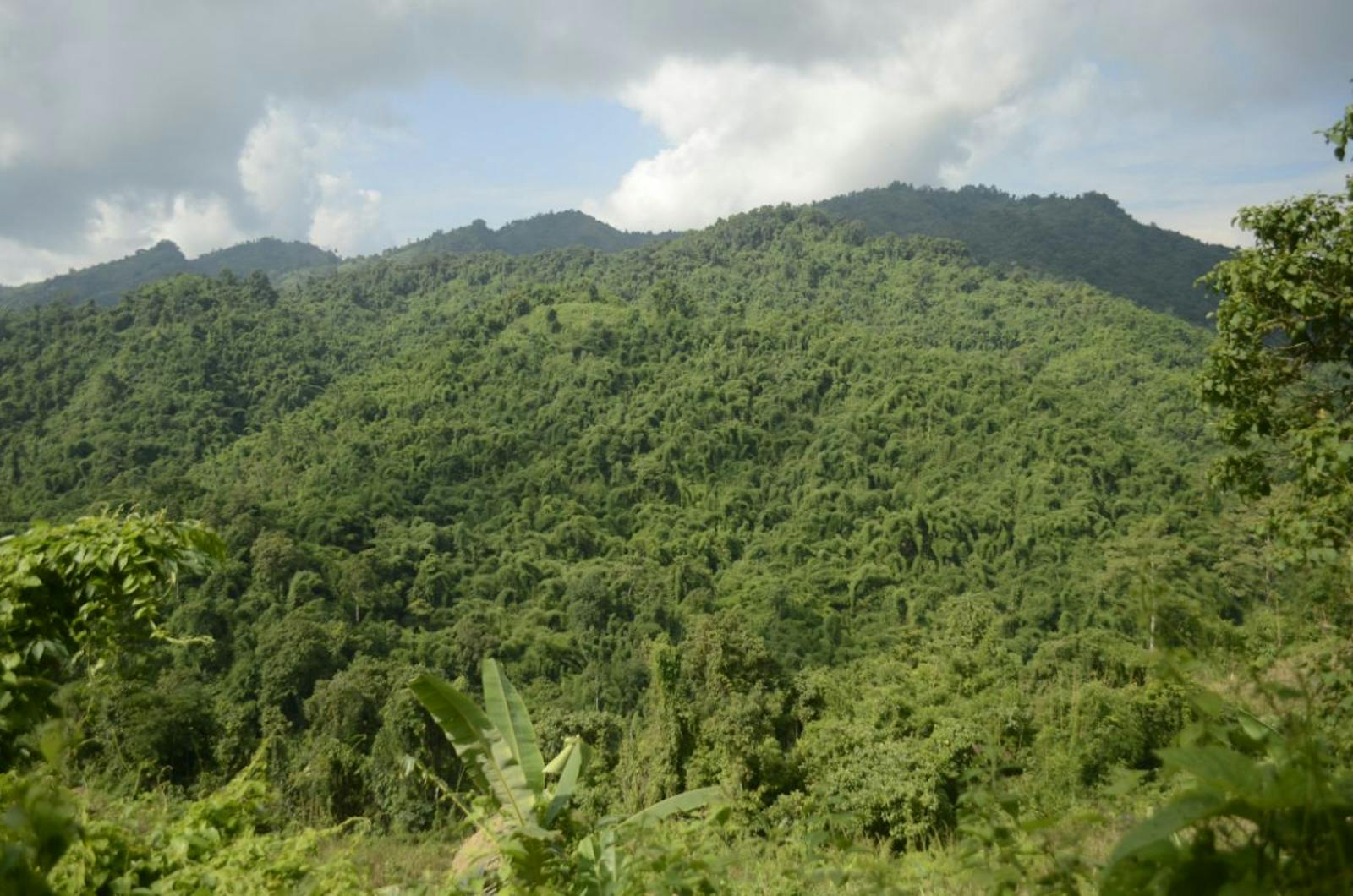Mizoram-Manipur-Kachin Rainforests
The ecoregion’s land area is provided in units of 1,000 hectares. The conservation target is the Global Safety Net (GSN1) area for the given ecoregion. The protection level indicates the percentage of the GSN goal that is currently protected on a scale of 0-10. N/A means data is not available at this time.
Bioregion: Arakan Mountains & Northern Triangle Forests (IM10)
Realm: Indomalaya
Ecoregion Size (1000 ha):
13,586
Ecoregion ID:
249
Conservation Target:
70%
Protection Level:
1
States: Myanmar, India, Bangladesh
Predictions of biological richness made based on patterns of biogeography would make this ecoregion a stand out as one of the most species-rich. But the actual numbers of richness and endemism remains an unknown because there are few thorough biological explorations after the pioneering efforts by Kingdon-Ward in the early 1900s and by the Burma Wildlife Survey in 1959–60. But what is known is that this ecoregion has the highest bird species richness of all Indo-Pacific ecoregions.

The flagship species of the Mizoram-Manipur-Kachin Rainforests is the leaf muntjac. Image credit: Creative Commons
The ecoregion is vast, covering the remote sub-montane rainforests from the southern Arakan mountains and Chin Hills in western Myanmar, north to the Chittagong Hills of Bangladesh and Mizo and Naga hills along the Myanmar-Indian border, and then into the northern mountains of Kachin State in Myanmar. The climate is seasonal. The monsoons that sweep in from the Bay of Bengal dominates the weather. Some areas receive over 2,000 mm of rainfall annually.
The mountain range that the ecoregion traverses was formed by the geological compression and buckling from the collision between the northward drifting Deccan Plate, now the Indian subcontinent, and the northern Eurasian plate over 40 million years ago. The mountain range continues southward, arcing under the ocean to form the outer edge of the plate on which Indonesian islands emerge at various points. These mountains are now a biogeographic area of overlap for the Indian, Indo-Malayan, and Indo-Chinese biotas, which contributes to the high species richness.

Wooly Congea (congea tomentosa). Image credit: Creative Commons
The dominant tree species are species of Dipterocarpus, Parashorea, Hopea, Shorea, Swintonia, Bombax, Albizia and Castanopsis. The dense understory includes smaller evergreen trees and bamboos. The tall Chittagong forest bamboo that grows to over 25 m tall dominates some areas of the Arakan mountain areas in monotypic stands.
About 150 species of mammals are known from this ecoregion, but because it is underexplored, this is likely an underestimate. The forests in Manipur harbor a small population of the endangered Thamin, a subspecies of Eld’s deer. The leaf muntjac or Putao muntjac discovered in 1997 further north in Hukawng Valley is also found in the northern forests. Other threatened and endangered mammals in the ecoregion include the region’s largest predator and herbivore, respectively the tiger and the Asian elephant. The Arakan Mountains support Myanmar’s most important elephant population. The red panda, one of the most charismatic mid-sized mammals of Asia that can be truly described as ‘cute’, lives in the northern mountain forests of this ecoregion.

Clouded leopard. Image credit: Cathleena Beams, Creative Commons
About 580 bird species have been described from this ecoregion, and include the colorful Blyth’s tragopan, grey peacock-pheasant, green peafowl, Kalij pheasant, and three hornbills: great hornbill, wreathed hornbill, and oriental pied-hornbill. All are good indicators of intact forests because of their need for mature trees and low thresholds for disturbances.
Despite the low formal protection, over half of the ecoregion’s natural forests still remain. The forests were logged for timber in the past, but the primary threat now is shifting cultivation. Controlling shifting cultivation will require providing the people with alternative livelihoods, and promoting sustainable agricultural methods. For instance, in northeast India, banning shifting cultivation had no effect because of the lack of alternative livelihoods.

Gibbon hoolock. Image credit: Creative Commons
Thus, the recommended priority conservation actions should be to: 1) expand the protected areas network to achieve a 50% threshold to capture the high biodiversity and local endemism; 2) engage and provide local communities with alternative livelihood opportunities and knowledge transfer for sustainable agricultural practices to change their attitude; and 3) engage local communities as conservation stewards.
Citations
1. Wikramanayake, E, E. Dinerstein, et al. 2002. Terrestrial Ecoregions of the Indo-Pacific: A Conservation Assessment. Island Press.
2. Critical Ecosystems Partnership Fund. 2012. Ecosystem Profile. Indo-Burma Biodiversity Hotspot. 2011 Update. https://www.cepf.net/Documents/final.indoburma_indochina.ep.pdf Accessed Dec 2017.
3. Chatterjee, S., Saikia, A., Dutta, P., Ghosh, D., Pangging, G. and Goswami, A.K., 2006. Biodiversity significance of North east India. WWF-India, New Delhi, pp.1-71.




